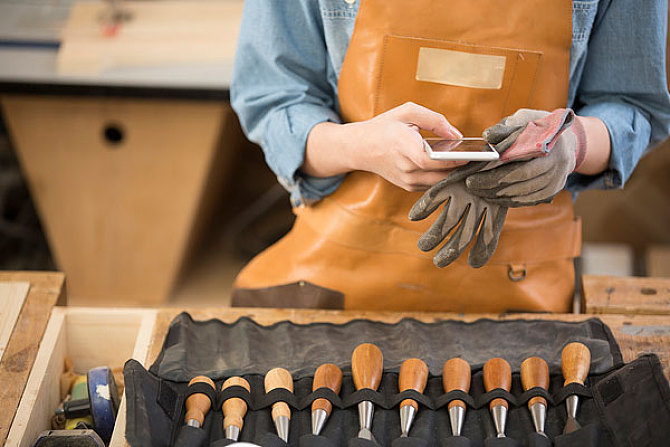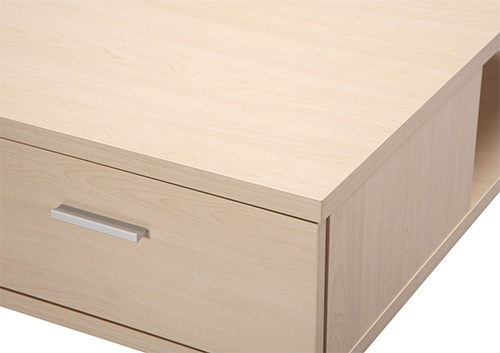|
Woodworking cutter, woodworking drills, woodworking cutters and their use
Woodworking tools are tools that cut wood into the desired shape and size. Woodworking knives are available in both hand and machine applications, and are used in both batch and mass production. Machine woodworking tools are divided into five categories: saws, blades, milling cutters, drill bits and boring tools.
Woodworking saw
|
Tools for sawing wood, such as circular saws, band saws, band saws, chain saws and tube saws, are most commonly used with circular saws and band saws. When the kerf is parallel to the wood grain, it is called slitting (split). When the kerf is perpendicular to the wood grain, it is called cross-cutting (cutting). The latter adopts a circular zigzag shape different from the former to facilitate cutting the fiber when cross-cutting.
blade
Flat blade with cutting edge for flat machining or cutting of wood. Inserting different parameters of the blade on various machine tools can be processed in different ways, such as cutting, rotary cutting, scraping and cutting. Planing is used for planar machining, and the blade or workpiece is generally linear. Under certain conditions (such as reducing the cutting angle), cutting can cut thin wood, which is a high-quality decorative material. During the rotary cutting, the wood rotates around the fixed center, and the blade makes a continuous linear motion toward the center, and the wood is cut into strip-shaped thin wood (single board) for producing plywood. Shearing is used to cut veneers during plywood production.
Woodworking cutter
|
A rotary tool with one or more teeth. Through the relative movement of the workpiece and the milling cutter, each tooth sequentially cuts off the remaining amount of the workpiece. Woodworking milling cutters are divided into two types: perforated set milling cutters and shank milling cutters according to the card loading method. The set milling cutter is available in three types: integral, insert and combination. Milling cutters are widely used in the processing of planes, forming surfaces, boring, boring heads, slots and engraving in joinery production. Compared to milling cutters for cutting metals, woodworking cutters have larger rake angles and back angles to achieve sharp edges and reduce cutting resistance. Another feature is the small number of cutting teeth and a larger chip space. In addition to tool steel and alloy steel, woodworking cutters also use hard alloys to increase productivity and tool life.
Woodworking drill
 |
Woodworking drills are rod-shaped or helical cutters with cutting edges for machining through holes or blind holes. The difference between woodworking drills and woodworking end mills is that there is no cutting edge on the side. In addition to the main cutting edge, the woodworking drill has a sharp cutting edge on the outer edge to cut the wood fiber and make the side of the hole more flat.
Boring tool
There are many special tool types for machining boring, such as hollow square chisel, hollow square chisel with drill bit, chain boring cutter and machine chisel. The end face of the hollow square chisel has a crescent-shaped cutting edge for cutting a square corner around the borehole. A hollow square chisel with a drill bit is a combination of a drill bit and a square chisel, and the drill bit is mounted inside a hollow square chisel. The chain cutter is a continuously rotating chain-type multi-tooth cutter that is similar to milling or longitudinal sawing when machining a bore. When the machine uses a chisel to open the hole, the chisel makes a cutting motion that reciprocates up and down.
Woodworking tool basics
1. Machines with tools are:
Four-sided planer, vertical shaft machine, wood shaving machine, universal saw, manual lathe, double-headed shears, etc.
2, straight lines with four sides planing
For those less than 400mm long, the four-sided planer must be prepared. The four-sided planer and the ferrule can also be used on the vertical shaft machine (right knife or left knife). When the tungsten steel sheet of the knife is not made, consider combining tools and combination tools. The size can not be self-contained shield, must be closely related, the outer diameter is the same, the shaft diameter is the same, the four-sided planer considers that the line is too thick or too thin, the clear line type is one open two after four plane planer, or four sides planer after opening two, process flow To distinguish.
3, the general panel knife type to vertical shaft machine, indicating the material, so that suppliers choose the hardness or density of tungsten steel sheet and steel strength.
4, the arc-shaped tool needs to use the vertical axis machine, the arc is curved on both sides, you need to do a positive and a negative total of 2 knives.
5, must pay attention to whether the curved parts need to be lying or vertical type, must be clearly distinguished, you can refer to #400 large dishes on the top line of the cabinet tool (combined knife), single vertical axis for reversal, double vertical axis has a positive rotation Or a reversal, the shaft diameter is φ30mm.
6, male or female knives should pay attention to the matching drawing or clearly stated. The tool reverses direction.
7. The four-sided planing right or upper knife is reversed, the left or lower knife is reversed, and the feed 0 is the reference. Just remember that the wood feed and the tool turn must be opposite, the tool direction cannot be consistent, and the single vertical axis is Reversal, the shaving machine is smooth; the four-sided planer shaft diameter is φ40mm, the vertical shaft machine shaft diameter is φ30mm, the shaving machine shaft diameter is φ12.7mm, the universal saw shaft diameter is φ25.4mm, and the universal saw is smooth.
8, the coding rules of the tool:
|
1) Vertical shaft knife
The serial number indicates the number of knives or combination knives A, B, C (where the even number is forward and the odd number is reversed)
2) Four-sided planer
The serial number A indicates the left knife, B indicates the right knife, C upper knife, D lower knife, 1 indicates the number S
3) Flat knife
The height is based on the square of 100H
4) Slot cutter Slotted knives are called slot cutters
5) Shaving knife
In general, the shaving knives, the bottom shaving knives, and the ordinary shaving knives are consumables. When the drawings are archived, they are divided into bearing shaving knives, engraving knives, and dragon knives.
6) Four-sided planing knife:
It is mainly used on the four-sided planer to prepare the parts in the longitudinal direction without bending.
7) Steel front knife:
|
It is mainly used on planing machines such as single planer, double planer, hand planer, etc., to plan the surface of the parts.
8) Saw blade:
Mainly used in double shears, automatic double shears, vertical shaft machines, hanging saws, vertical saws, platform saws, cutting machines, automatic edge banding machines, etc., parts are cut, small lines, openings, trimming, Fixed width, truncation and other processing.
9) Saw blade:
It is mainly used for band saws, wire saws, and fine sawing of parts.
10) Drill bit:
It is mainly used on various punching machines and engraving machines to punch parts.
Straight shank drill: mainly used for processing internal and external esthetics, wood boring holes, horizontal button holes, and layer glass holes.
9. Cutting diameter of the tool:
Relative to the distance between the two points of the minimum cutting of the knife, the bottom diameter is generally φ100 or φ65, and φ90 or φ80 can also be used. The bottom diameter of the module should be smaller than the arc R of the work object, and should not be larger than this round corner.
10. Cutting outer diameter of the tool:
The maximum distance between the two points of the knife cutting is φ150; the general number of teeth is 4T, the universal saw is 12T or 8T, the number of slot cutters is 6T or 8T, the planer is 2T, the flat knife is 4T, and the four-sided planer is 4T.
11, type knife = tungsten steel length * width * height * number of teeth * base * discount, the tool is generally 8mm wide, 3mm thick.
12. Classification of tools:
Woodworking tools basic knowledge classification
The tool is mainly used for cutting, cutting, boring, drilling and planing on the machine. There are different names and specifications, which can be customized as needed.
1) Engraving knife:
Mainly used for engraving machine or small boring machine, dovetail machine, sculpt, groove, perforation, grooving, round edge processing of product parts.
2) Vertical shaft knife:
It is mainly used on the automatic double-shearing machine of vertical shaft boring machine, and the parts are processed by squatting.
3) Edge groove cutter:
It is mainly used for the processing of grooving and pulling parts on the hoisting saw and double shearing machine.
4) Double-head screw hole, bed hook screw hole, perforation, positioning hole, etc.
The positioning holes depend on the specifications of the raft, the fastening parts are stable with the raft, and the hole of the connecting piece is increased by 1 mm.
5) Drill bit:
The inner and outer teeth are made of two straight-handle single-layer drills of φ11 and φ11.5 depending on the material. The inner and outer teeth of φ1/4′′ are made of φ9 and φ9.5 drills according to the material. The center distance of the drill holes is a multiple of 17, 22, 32, 32.








